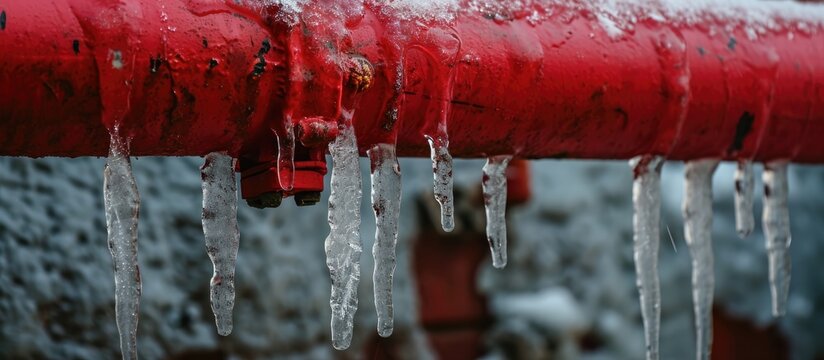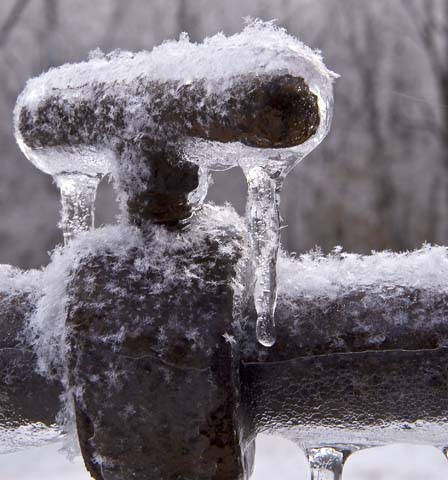Ways to Protect Your Plumbing from Cold Weather: Essential Strategies
Ways to Protect Your Plumbing from Cold Weather: Essential Strategies
Blog Article
Almost everyone has got their private idea on the subject of Helpful Tips to Prevent Frozen Pipes this Winter.

Cold weather can ruin your plumbing, specifically by freezing pipes. Here's exactly how to prevent it from taking place and what to do if it does.
Introduction
As temperature levels decline, the danger of icy pipes boosts, possibly resulting in pricey repair work and water damages. Understanding exactly how to stop frozen pipes is essential for home owners in cold climates.
Avoidance Tips
Shielding vulnerable pipes
Wrap pipes in insulation sleeves or use warm tape to secure them from freezing temperature levels. Concentrate on pipes in unheated or outside locations of the home.
Heating methods
Keep indoor rooms sufficiently heated, especially areas with pipes. Open up cabinet doors to allow warm air to flow around pipelines under sinks.
How to determine icy pipelines
Seek decreased water flow from faucets, unusual odors or noises from pipes, and visible frost on revealed pipelines.
Long-Term Solutions
Architectural changes
Take into consideration rerouting pipelines far from outside walls or unheated areas. Add added insulation to attic rooms, cellars, and crawl spaces.
Updating insulation
Purchase premium insulation for pipes, attic rooms, and walls. Correct insulation assists keep constant temperatures and minimizes the risk of frozen pipelines.
Protecting Outside Plumbing
Garden tubes and outdoor faucets
Separate and drain yard hoses before winter season. Mount frost-proof faucets or cover outdoor faucets with shielded caps.
Understanding Frozen Pipelines
What creates pipes to freeze?
Pipes freeze when exposed to temperature levels listed below 32 ° F (0 ° C) for expanded durations. As water inside the pipelines ices up, it broadens, taxing the pipe walls and potentially triggering them to rupture.
Dangers and problems
Icy pipes can cause water supply interruptions, residential or commercial property damages, and pricey repairs. Ruptured pipelines can flood homes and trigger comprehensive structural damages.
Signs of Frozen Pipeline
Recognizing icy pipelines early can avoid them from breaking.
What to Do If Your Pipelines Freeze
Immediate actions to take
If you think icy pipes, keep taps open to alleviate pressure as the ice thaws. Utilize a hairdryer or towels taken in hot water to thaw pipelines gradually.
Conclusion
Stopping icy pipelines needs positive procedures and quick responses. By understanding the reasons, indicators, and safety nets, property owners can protect their pipes during cold weather.
5 Ways to Prevent Frozen Pipes
Drain Outdoor Faucets and Disconnect Hoses
First, close the shut-off valve that controls the flow of water in the pipe to your outdoor faucet. Then, head outside to disconnect and drain your hose and open the outdoor faucet to allow the water to completely drain out of the line. Turn off the faucet when done. Finally, head back to the shut-off valve and drain the remaining water inside the pipe into a bucket or container. Additionally, if you have a home irrigation system, you should consider hiring an expert to clear the system of water each year.
Insulate Pipes
One of the best and most cost-effective methods for preventing frozen water pipes is to wrap your pipes with insulation. This is especially important for areas in your home that aren’t exposed to heat, such as an attic. We suggest using foam sleeves, which can typically be found at your local hardware store.
Keep Heat Running at 65
Your pipes are located inside your walls, and the temperature there is much colder than the rest of the house. To prevent your pipes from freezing, The Insurance Information Institute suggests that you keep your home heated to at least 65 degrees, even when traveling. You may want to invest in smart devices that can keep an eye on the temperature in your home while you’re away.
Leave Water Dripping
Moving water — even a small trickle — can prevent ice from forming inside your pipes. When freezing temps are imminent, start a drip of water from all faucets that serve exposed pipes. Leaving a few faucets running will also help relieve pressure inside the pipes and help prevent a rupture if the water inside freezes.
Open Cupboard Doors
Warm your kitchen and bathroom pipes by opening cupboards and vanities. You should also leave your interior doors ajar to help warm air circulate evenly throughout your home.

Hopefully you enjoyed our part about Helpful Tips to Prevent Frozen Pipes this Winter. Thanks for finding the time to read our article post. If you please pause to promote this page if you enjoyed reading it. We love reading our article about How to prepare your home plumbing for winter weather.
Schedule Now Report this page